Due to the GDPR guidelines, the names of the respective students are not listed here, only the individual supervisors (past and present members of the Laboratory) and titles of the respective theses (along with links to them - if available - in the Charles University Digital Repository). The theses are always listed according to their defense date (in descending order). Some of them are written in Czech but all have at least an English abstract.
Kateřina Bruštíková, Ph.D.
- Annulate lamellae and their role in viral infection
- Role of cGAS-STING pathway in tumour suppression and tumorigenesis
- Micronuclei and their connection with intracellular innate immunity and viral infection
- MicroRNAs encoded by polyomaviruses
- Nuclear lamina, its function in the cell and its role in interaction with non-enveloped DNA viruses
Alena Drda Morávková, Ph.D.
- Polioviruses and poliovirus vaccines
- Bacteriophage therapy with focus on urinary catheters biofilms
- Therapeutic approaches to Ebola virus infections
- Inovation in influenza vaccines
- Bovinne papillomaviruses
- Immunity and polyomaviruses
- Proteasomes and DNA virus infection
- Seroprevalence of polyomaviruses in human
- The persistence of human polyomaviruses
- Influence of single nucleotide mutations on influenza pathogenicity
- Interaction of influenza virus with cell defence mechanisms
- The comparision of genomes/proteomes of Polyomaviridae family
- New approaches in vaccination against HIV
- Non-coding RNA in hepresvirus infection
- Action of polyomavirus protein in host cell cycle
- The autophagy as cell defense mechanism
- Role of host actin cytoskeleton in entry of poyomaviruses
- Human polyomaviruses large T antigen and its role in cell transformation
- Development of chimerical virus-like particles for therapeutic application
Assoc. Prof. Jitka Forstová, Ph.D.
- Autophagy in viral infections of small unenveloped DNA viruses, with the focus on the roles of autophgy in infection by DNA viruses
- Interactions of polyomavirus structures with components of cell innate immunity
- The role of DNA sensors cGAS and IFI16 in virus infections
- Virus translocation from cytoplasm to the cell nucleus
- Polyomavirus minichromosome structure
- Intracellular restriction factors of small DNA viruses
- Properties and functions of agnoprotein of polyomaviruses
- Exosomes, their biogenesis, composition and role
- Histone modifications and methylation of polyomaviral genomes during the infection
- Fish herpesviruses
- Role of phosphorylation in nuclear import of viral proteins and complexes
- Endoplasmic reticulum-associated degradation and its role in virus infection
- Vesicular trafficking from acidic compartments to the endoplasmic reticulum
- The role of Interferon regulatory factors in virus infections
- Nuclear envelope interactions
- Mechanisms of autophagy and their relation to virus infections
- Delivery of genomes of nonenveloped DNA viruses into the cell nucleus
- Properties and function of middle T antigen of the murine polyomavirus
- Signification of sumoylation for infection by selected viruses replicated in the cell nucleus
- Viruses and cytosketelon of the cell nucleus
- Interference of selected DNA viruses with apoptotic processes
- Viruses - inducers of tumors
- Entry of DNA viruses into the cell nucleus
- Properties, interactiions and functions of polyomavirus minor proteins
- Prions
- Antiviral effects of lupane triterpenoids
- Expression of TβRII:Fc from recombinant vaccinia virus
- Cross-presentation and its role in immune responses elicited by virus-like particles
- The hepatitis C virus
Martin Fraiberk, Ph.D.
- Veterinary antiviral vaccines based on nucleic acids
- Therapeutic use of bacteriophages and their modifications
- Avian polyomaviruses
Prof. Ivan Hirsch, Ph.D.
- Use of the Crispr/Cas9 system for the study of the hepatitis B virus life cycle
- Interaction of hepatitis B virus proteins with mechanisms of innate immunity
- Effect of epigenetic modifications on replication and transcription of hepatitis B virus DNA
- Effect of restriction factors on replication of hepatitis B virus
Lenka Horníková, Ph.D.
- Adaptor protein STING and his role in viral infections
- Tunneling nanotubes and life cycles of viruses
- Impact of plant alkaloids on viral infection
- Helicase DHX9 and its role in viral life cycles
- Mechanisms of superinfection exclusion by animal viruses
- Role of molecular chaperones Hsp70 and Hsp90 in the replication cycle of DNA viruses
- Microtubule acetylation and its role in viral infection
Sandra Huerfano Meneses, Ph.D.
- Interplay between small DNA viruses and the PML nuclear bodies
- Negative regulation of the IF116 and cGAS DNA sensing pathways
- The role of the Smc5/6 complex in DNA viral infection
Boris Rjabčenko, Ph.D.
Hana Španielová, Ph.D.
- DNA/RNA intercalating agents as antivirotics: possible mechanisms of action
- Macropinocytosis in viral infection
- Pseudotyping in baculoviruses
- Influence of size and geometry of nanoparticles on cellular internalization pathways
- The role of JC virus in etiology and therapy of multiple sclerosis
- Raccoon polyomavirus: example or exception of polyomavirus driven oncogenesis?
- Diagnostics of Tick-borne Encephalitis: Present State and Future
- Effect of pH on initiation of viral infection
- Cell surface markers in colorectal cancer
- Exosomes in viral infection and cancer
- The application of viral nanoparticles in biomedicine
- Retargeting of viral particles for directed cargo delivery into cells
- Retrocyclins
- Role of the PDZ domain-binding motif of the oncoprotein E6 in the pathogenesis of high risk papillomaviruses
- Implication of eukaryotic DNA repair machinery in viral replication
- Viral and cellular RNA-dependent RNA polymerases
- Study of polyomavirus assembly: a practical approach
- Virotherapy: Oncolytic poxviruses
Vojtěch Šroller, Ph.D.
- Virus interaction with the cellular DNA damage response
- The role of IFI16 protein in viral infection
- The role of PML nuclear bodies in herpesvirus infection
- Role of helicases UAP56 and URH49 in viral infection
- Dengue vaccines





















